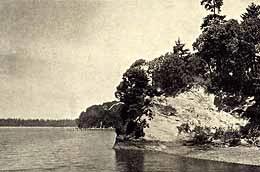On March 2, 1933, 1,200 unemployed men from Seattle meet 800 police and vigilantes in Olympia. The protesters want the legislature to assess higher taxes on the rich, to end foreclosures, and to provide hot meals for their children. They demand that the city of Olympia "make every possible preparation for caring for and protecting the marchers." The city commissioners refuse and warn that the marchers enter Olympia "at their own risk" (Newell, 372).
Olympia authorities were told by a King County legislator that 50,000 hunger marchers would descend on the state capitol. The City beefed up its police force and were joined by a group calling itself the American Vigilantes of Thurston County. The vigilantes were told, "...nothing so swiftly sickens a mob as brutal, stomach-wrenching, soul-sickening force, swiftly, fearlessly and judiciously applied" (Berner, 322).
The marchers arrived on foot and by automobile and were shuttled into Priest Point Park north of downtown where they spent the night in a downpour. Seattle legislator Warren D. Magnuson (1905-1989) helped obtain permission for women and children to sleep in the old state house, but could not get vacant stores opened for the men. The protesters spent the night in the rain surrounded by the police and the vigilantes.
The march on the capitol scheduled for 10 a.m. the next day did not come off. The sheriff ordered the park vacated because of the unsanitary conditions. The marchers slowly dispersed and there was no violence. The Highway Patrol reported that the road to Seattle was lined with out-of-gas vehicles.

